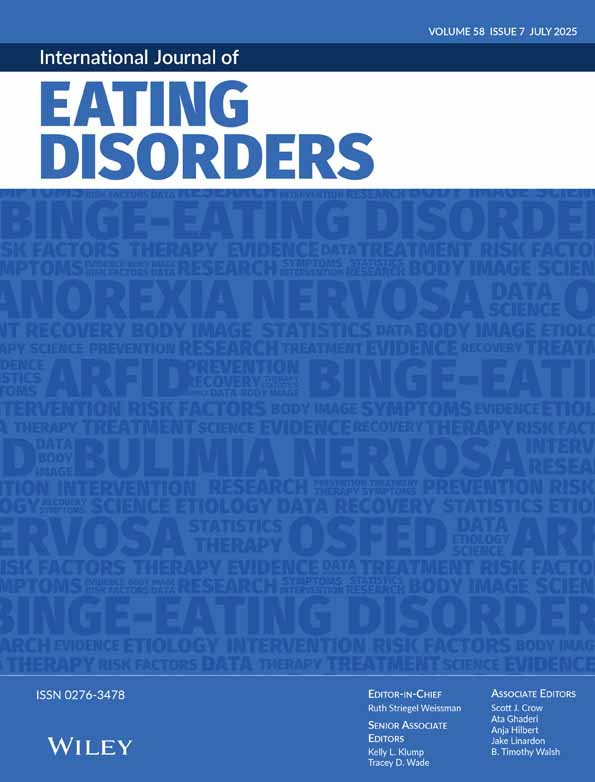Ethnic differences in the prediction of eating and body image disturbances among female adolescent psychiatric inpatients
Abstract
Objective
The current study examined predictors of eating and body image disturbances in psychiatrically hospitalized female adolescents and investigated whether the predictors differ by ethnicity.
Method
Participants were 427 (320 Caucasian, 53 Latina, 54 African American) female adolescent psychiatric inpatients. Predictors of eating disorder features (dietary restraint, binge eating, and purging) and body image dissatisfaction (BID) were tested separately for the three ethnic groups. In addition to the eating and BID variables, the following predictor variables were considered: depression, anxiety, impulsivity, negative self-esteem, peer insecurity, and abuse.
Results
Caucasians reported significantly higher levels of dietary restraint and BID than Latinas and African Americans, whereas reports of binge eating did not differ by ethnicity. Regression analyses revealed that the predictor variables accounted for significant and substantial amounts of the variance in the four eating and body image domains. Different psychological and social variables predicted eating disorder symptoms and BID across ethnic groups.
Discussion
These findings suggest, for psychiatrically hospitalized adolescent females, that different patterns of factors may contribute to the maintenance of eating and body image disturbances across ethnic groups. Future research testing models of the etiology or maintenance of these disturbances needs to include ethnicity to ascertain whether the hypothesized components operate differently by ethnicity. © 2005 by Wiley Periodicals, Inc.




